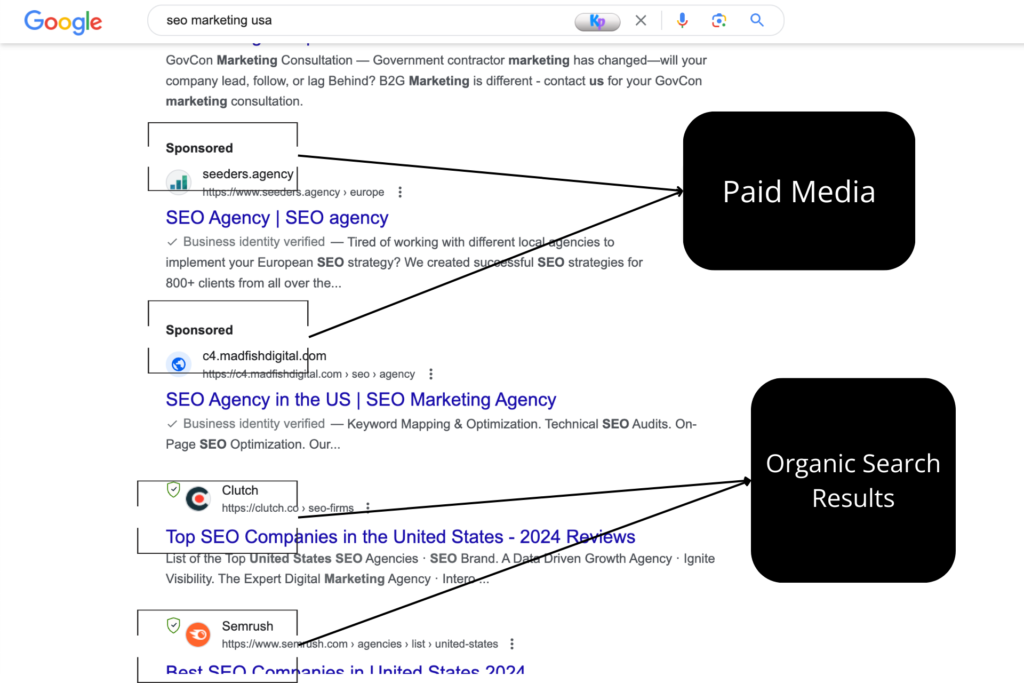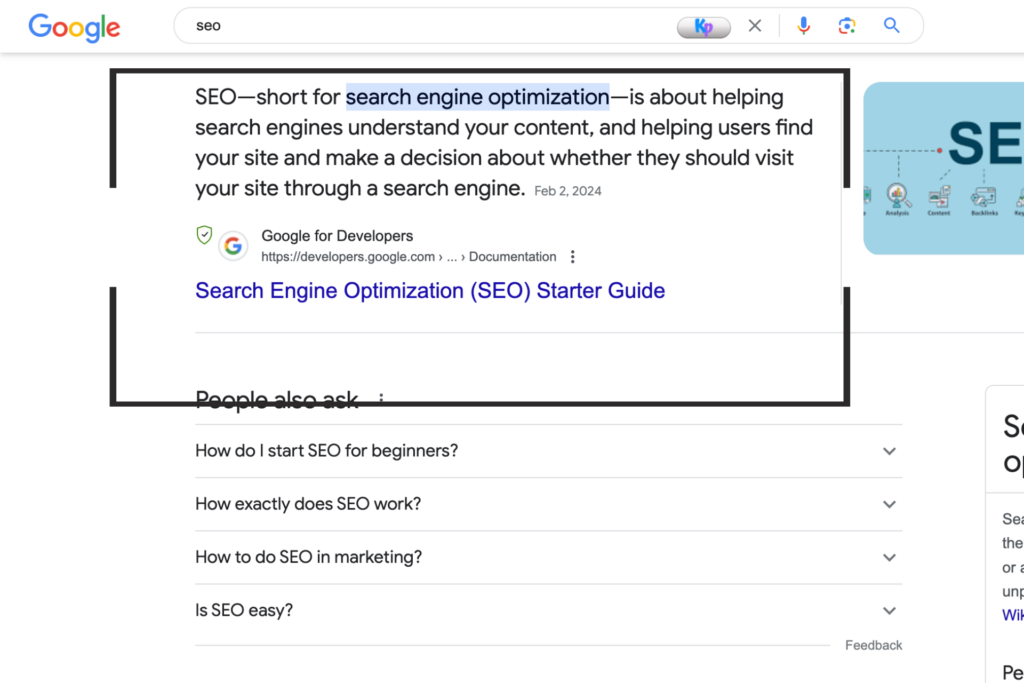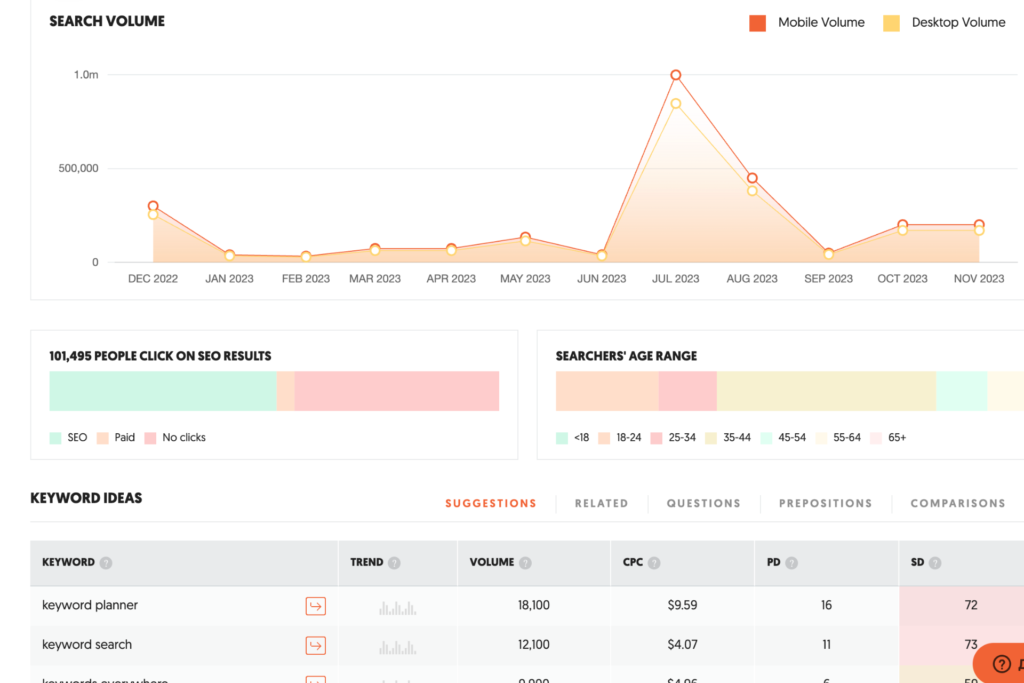Introduction to SERP
Have you ever typed a question into Google, only to be met with a seemingly endless list of links? That’s, Search Engine Results Page, or SERP position tools are tools that help you to track the position of your website in Google’s search results for specific keywords.
Tracking your SERP position is akin to having a compass guiding you towards SEO mastery.
Why is it important to track your Google SERP position?
Tracking your SERP position is important for many reasons.
First, it can help you to identify which keywords you are ranking well for and which keywords you need to improve your ranking for.
Second, it can help you to track the performance of your SEO (search engine optimization) efforts over time.
Third, it can help you to identify any potential problems with your website, such as technical issues or penalties.

What are the basic elements of Google SERP?
Organic Search Results:
- These are the heart of SERPs. Google’s complex algorithm evaluates websites and ranks them based on over 200 signals. Factors like backlinks, On-page SEO, site speed, and brand trust play a role.
- An organic search result snippet typically includes:
- Page Title (Title Tag): The clickable headline that represents the page.
- Page URL: The web address where the content resides.
- Meta Description: A concise summary of what the page offers.
- Sometimes, Google spices up organic snippets with additional features, like showing the published date or site links to related sections or pages.
Paid Results (Google Ads):
- Advertisers bid on keywords through Google Ads. These paid results appear at the top or bottom of the SERP.
- While ad relevancy matters, placement often goes to the highest bidder.
- If you’ve ever seen those “Ad” labels next to search results, you’ve encountered paid listings.
Featured Snippets:

These are golden nuggets of information that Google extracts from web pages and displays at the top of the SERP.
- Featured snippets aim to answer user queries directly, saving them a click.
- For example, if you ask, “Seo?”—bam!—the answer appears right there.
Knowledge Graphs:
- Google’s attempt to read your mind (almost). These panels provide quick answers, facts, and related information.
- When you search for a famous person, place, or concept, the Knowledge Graph pops up.
Video Results:
- Videos are a powerful medium, and Google knows it. Video results often appear in SERPs.
Benefits of using a SERP position tool
There are some benefits to using a SERP position tool, including:
- Measure Progress: Trackers provide historical data, showing how your website’s ranking evolves. This helps you assess your SEO efforts’ effectiveness and identify improvement areas.
- Identify Trends: Trackers can reveal trends in ranking fluctuations. This can be due to algorithm updates, competitor activity, or seasonal changes in search behavior. By understanding these trends, you can adapt your SEO strategy accordingly.
- Competitive Analysis: Track the ranking of your competitors for the same keywords. This allows you to benchmark your performance and identify opportunities to outrank them.
- Content Optimization: Trackers can highlight which pages are performing well and which are lagging. This helps you prioritize content updates and optimize existing pages for better ranking.
SERP position tools act as your virtual search assistants, tirelessly tracking your website’s ranking amidst the ever-evolving search results.
What is a SERP rank tracker?
Imagine a tool that monitors your website's position for specific keywords on Google and other search engines. That's the essence of a SERP rank tracker. It automates the tedious task of manually checking your ranking, providing valuable information on how your website stacks up against the competition.
Types of SERP Rank Trackers:
A range of SERP rank trackers is available, catering to different needs and budgets. Here are some common options:
- FreeTools: Offer limited keyword tracking and basic features.
- Paid Tools: Provide a wider range of features, including competitor tracking, historical data analysis, and detailed ranking reports.
- SEO Agency Tools: Often included in comprehensive SEO service packages.
Examples of SERP tools
There are several different SERP position tools available, both free and paid. Some popular SERP position tools include:
- Google Search Console: Google Search Console is a free tool that provides you with a variety of information about your website’s performance in Google’s search results, including your SERP position.
- Ahrefs: Ahrefs is a paid tool that provides you with a comprehensive view of your website’s SEO performance, including your SERP position, backlinks, and keyword rankings.
- SEMrush: SEMrush is another paid tool that provides you with a comprehensive view of your website’s SEO and PPC performance, including your SERP position, keyword rankings, and competitor research.
Choosing the Right SERP Tracker:
Consider your website’s size, SEO goals, and budget when selecting a rank tracker. Look for tools that offer features like:
- Keyword tracking: Track your ranking for a set of relevant keywords.
- Competitor tracking: Monitor the ranking of your competitors for the same keywords.
- Historical data: Analyze trends in your ranking performance over time.
- Rank reports: Get detailed reports on your ranking progress.
- Local search tracking: Track your ranking for local searches (if applicable).
How to use a SERP position tool

To use a SERP position tool, you will need to create an account and then add the keywords that you want to track.
Once you have added your keywords, the tool will start tracking their position in Google’s search results. You can then check your results regularly to see how your ranking is changing.
What the Future for Google SERPs?
- Artificial intelligence (AI) is already making waves in SERPs. We can expect its influence to expand further. Imagine a future where AI-powered algorithms not only rank websites but also understand search intent with deeper nuance. This could lead to personalized SERPs, tailored to your unique search history, location, and even past interactions with specific websites.
The traditional blue link format might become a relic of the past. Google’s Search Generative Experience (SGE) is already testing the waters, providing AI-generated summaries directly on the SERP. This could transform how we interact with search results. Imagine asking “Should I buy a new tablet?” and receiving a comprehensive answer with pros, cons, and comparisons, all within the SERP
As competition in the digital sphere intensifies, Google might prioritize user experience even more. This could mean a shift towards SERPs that prioritize user engagement. Metrics like dwell time (how long users stay on a page) could influence ranking alongside traditional factors like website content.
Anonymized search data might become less readily available, making it more challenging for Google to personalize search results. This could lead to a resurgence of general, unfiltered SERPs that cater to a broader audience.
- Imagine searching for a new pair of shoes. Instead of flat images, AR could project a 3D model onto your foot, allowing you to see how the shoes would look and fit before you buy. This applies beyond fashion – searching for furniture could let you virtually place items in your living room to assess scale and style
- Imagine searching for a travel destination and being transported virtually to that location. You could explore a bustling marketplace, wander through a historical monument, or even dive into a coral reef – all within the confines of your VR headset
How to Find Your SERP Position?
To determine your ranking for specific keywords, consider the following methods:
Google Rank Checker: Use Google’s free tool to check where your keywords rank. Enter your target keyword along with location and country details to get accurate results.
Google Analytics: Navigate to “Acquisitions” and then “Search Console” in your dashboard. Look at the “Queries” section to find your average position for specific keywords.
Third-Party Tools: Utilize tools like Ahrefs, SEMrush, and Moz to track your search positioning for various keywords.
29 Strategies How can I improve my SERP position?
Now, let’s explore actionable steps to enhance your search engine rankings:
Work on Your SEO Game: Optimize your website for search engines by focusing on technical SEO, meta tags, and keyword usage.
Create High-Quality Content: Craft informative, engaging, and relevant content that resonates with your audience.
Snippet Optimization: Aim for featured snippets by structuring your content to answer common queries.
Long-Form Content: Develop comprehensive articles that provide in-depth information.
Readable Content: Make your content easy to read by using clear headings, bullet points, and concise sentences.
Mobile Optimization: Ensure your website is mobile-friendly for better rankings.
EAT (Expertise, Authoritativeness, Trustworthiness): Build credibility by showcasing expertise and trustworthiness.
On-Page SEO: Optimize title tags, meta descriptions, and headers.
Image Optimization: Compress images and use descriptive alt text.
Table of Contents: Include a table of contents for longer articles.
Keyword Research: Target relevant keywords with high search volume.
Keyword Variations: Use variations of your primary keywords.
Niche Down: Focus on specific topics within your niche.
Understand User Intent: Align your content with what users are searching for.
Analyze Competitor Pages: Study pages that already rank well.
Heat Maps: Understand user behavior on your site.
Traffic Sources: Identify where your traffic comes from.
User Experience: Improve site speed, navigation, and design.
Click-Through Rate (CTR): Craft compelling meta titles and descriptions.
Backlinks: Build high-quality backlinks from authoritative sites.
Content Refresh: Update and improve existing content.
Dwell Time: Encourage users to spend more time on your pages.
Social Presence: Engage on social media platforms.
Internal Linking: Connect relevant pages within your site.
Structured Data Markup: Use schema markup to enhance search visibility.
Monitor Technical SEO: Regularly check for issues like broken links and crawl errors.
Reduce Bounce Rate: Keep visitors engaged to reduce bounce rates.
Stay Updated: SEO practices evolve, so stay informed about industry trends.
Discover the latest trends and strategies in SEO: The Ultimate Guide What Is SEO and How It Works in 2024?
Conclusion
SERP position tools are valuable tools for anyone who wants to improve their website’s SEO performance and increase traffic to their website. By using a SERP position tool, you can track your keyword rankings, identify areas where you need to improve your website and gain competitive advantages



